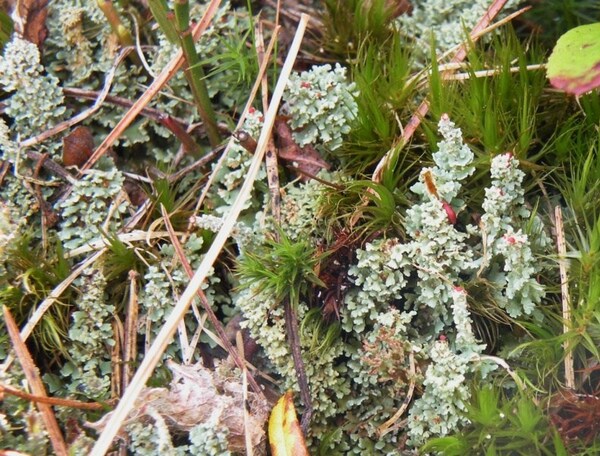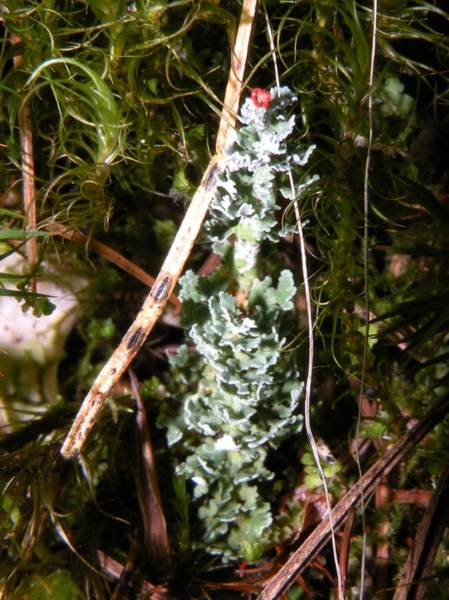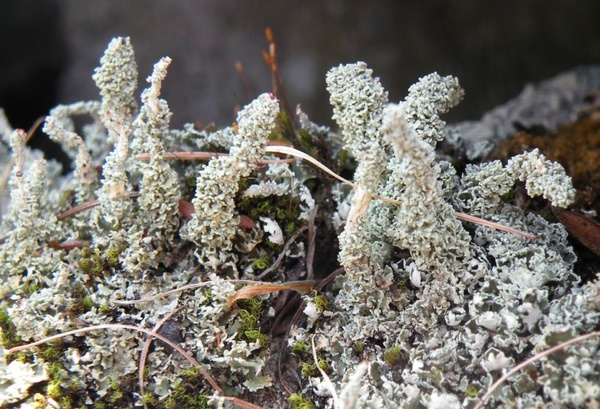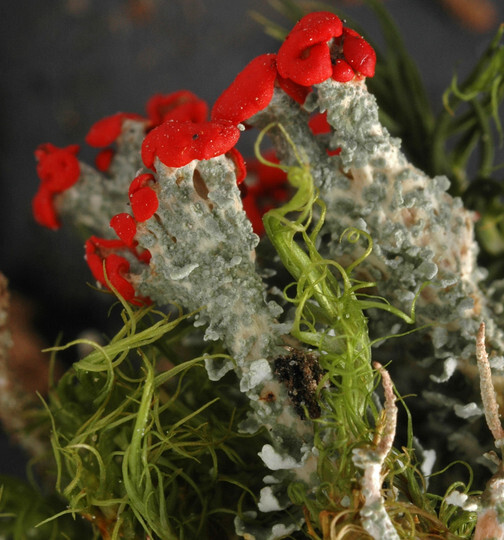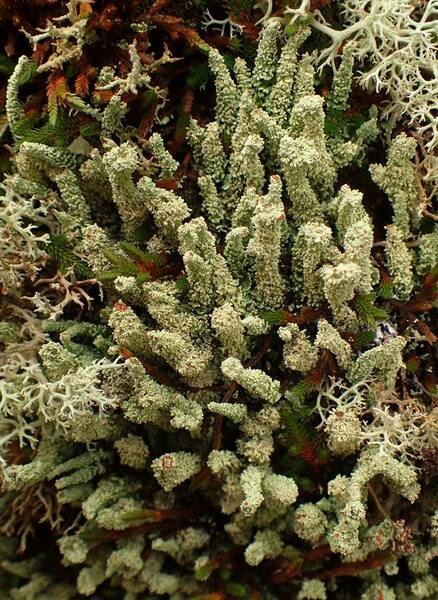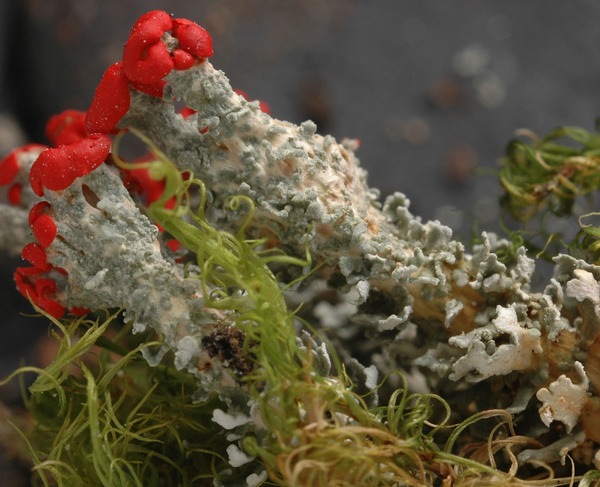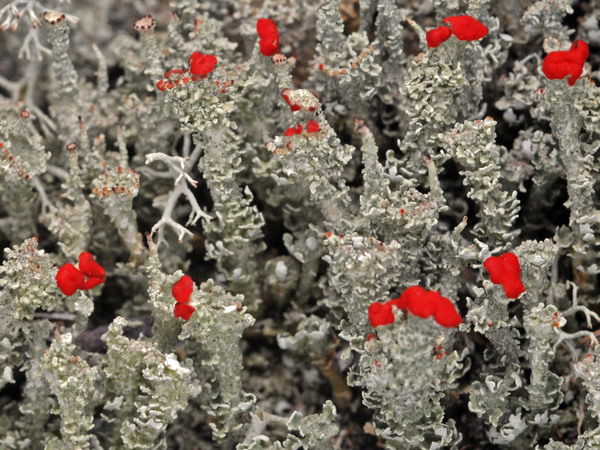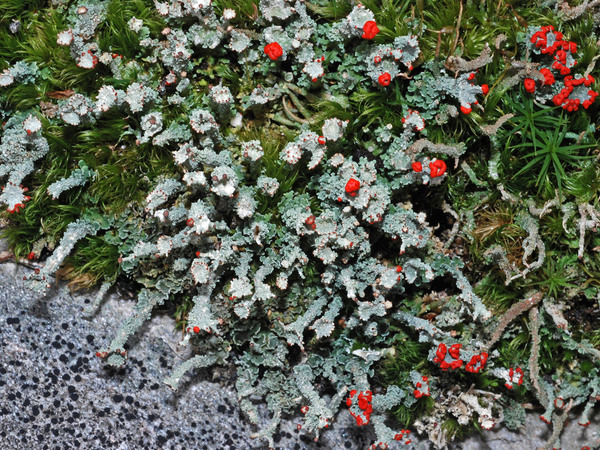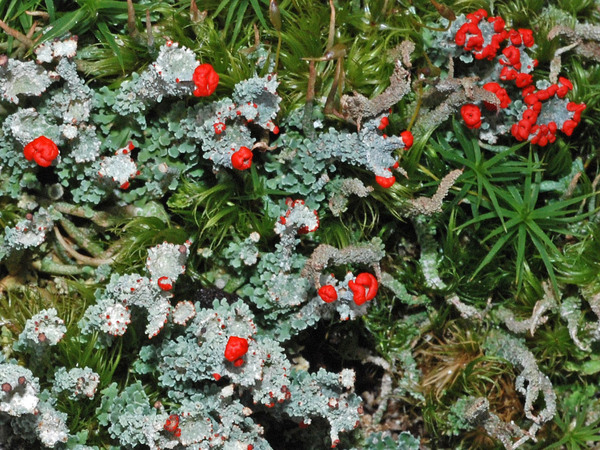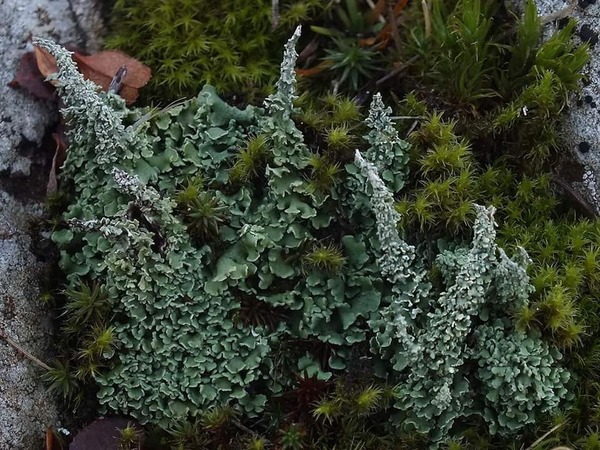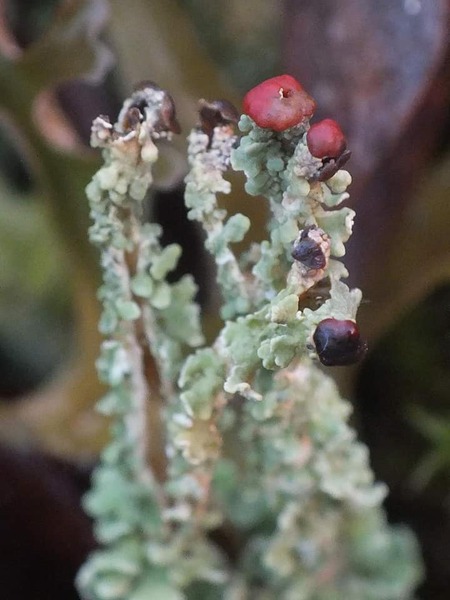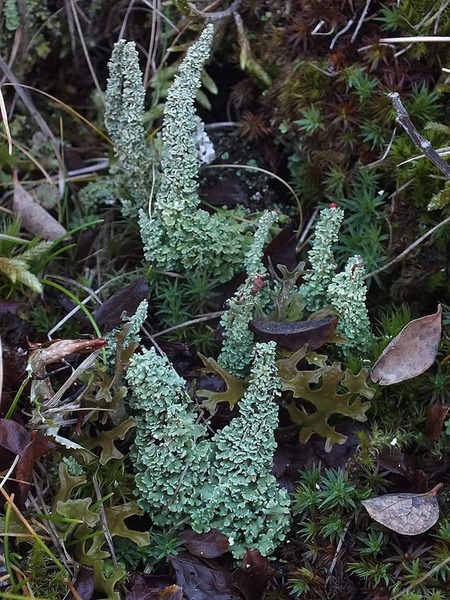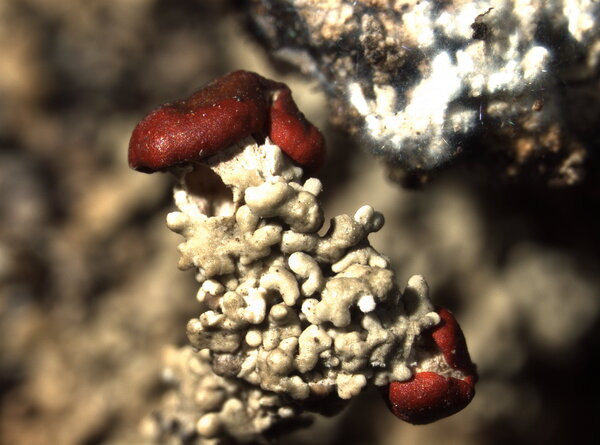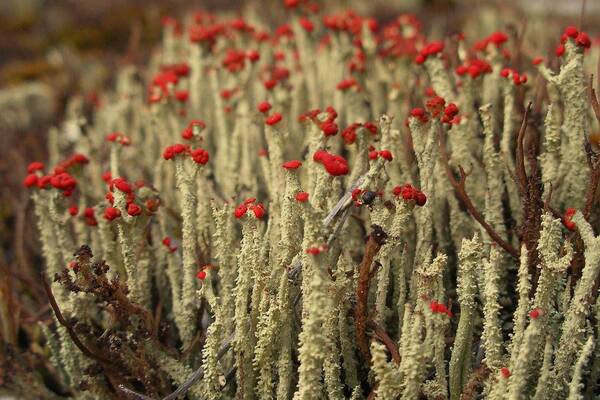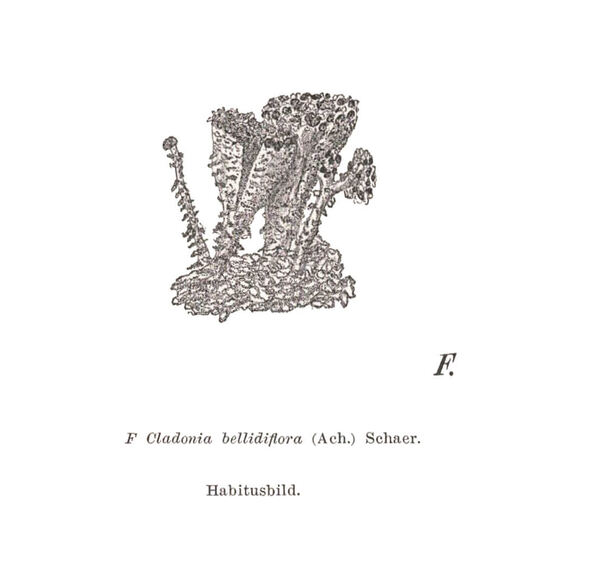Cladonia bellidiflora (Ach.) Schaer.
Lich. Helv. Spicil., 1, 1: 21, 1823. Basionym: Lichen bellidiflorus Ach. - Lichenogr. Suec. Prodr.: 194, 1799.
Synonyms:
Distribution: N - Frl (Tretiach & Hafellner 2000), Ven (Nimis 1994), TAA (Caniglia & al. 2002, Lang 2009, Nascimbene & al. 2022), Lomb (Rivellini & Valcuvia 1996, Gheza 2019, 2019b, Gheza & al. 2022), Piem (Isocrono & al. 2004, 2006, Isocrono & Piervittori 2008), VA (Piervittori & Isocrono 1999), Emil (Dalle Vedove & al. 2002, Fariselli & al. 2020), Lig (Giordani & Brunialti 2000). C - Tosc (Benesperi 2007, Benesperi & al. 2007).
Description: Primary thallus squamulose, the squamules persistent, 9-22 mm long, 2-4 mm wide, deeply indented, esorediate, white beneath, sometimes yellowish brown towards the base. Podetia elongate, hollow inside, grey-green to yellowish green, 2-3(-5) cm tall, up to 3 mm thick, corticate but cortex often disrupted, densely macrosquamulose also in upper parts, becoming granular or decorticate in upper parts, but never sorediate, pointed at apices or rarely with small, regular to irregular cups. Apothecia rather frequent, scarlet red, convex, developing at the margins of cups or at the tips of podetia, often clustered, the clusters up to 4 mm across. Asci 8-spored, clavate, thickened at apex, with a K/I+ blue tholus and a K/I+ strongly blue outer gelatinous sheath, Cladonia-type. Ascospores 1-celled, hyaline, ellipsoid. Pycnidia scarlet red, semi-immersed, pyriform to ovoid. Conidia hyaline, curved. Photobiont chlorococcoid. Spot tests: K-, C-, KC+ yellow, P-, UV+ white. Chemistry: usnic and squamatic acids, sometimes bellidiflorin; rhodocladonic acid in apothecia and pycnidia.Note: a cool-temperate to boreal-montane, circumpolar lichen found on acid soil and mossy rocks in wind-protected and humid situations (e.g. in sites with a long snow lie), most frequent near or above treeline.
Growth form: Fruticose
Substrata: soil, terricolous mosses, and plant debris
Photobiont: green algae other than Trentepohlia
Reproductive strategy: mainly sexual
Commonnes-rarity: (info)
Alpine belt: very rare
Subalpine belt: rather rare
Oromediterranean belt: absent
Montane belt: rare
Submediterranean belt: absent
Padanian area: absent
Humid submediterranean belt: absent
Humid mediterranean belt: absent
Dry mediterranean belt: absent
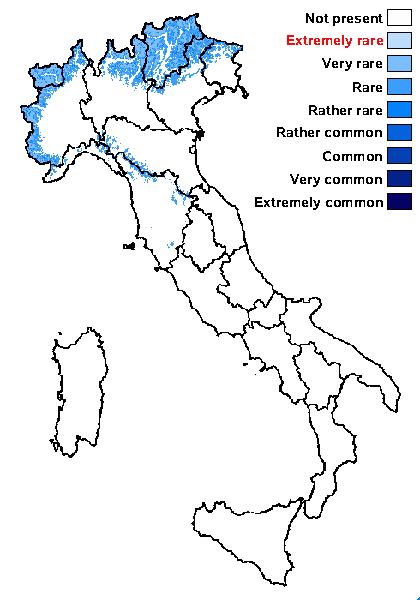
Predictive model
Herbarium samples
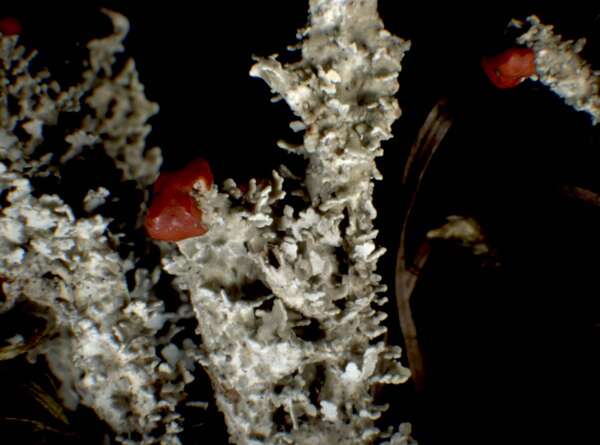

P.L. Nimis; Owner: Department of Life Sciences, University of Trieste
Herbarium: TSB (17069)
2001/12/04
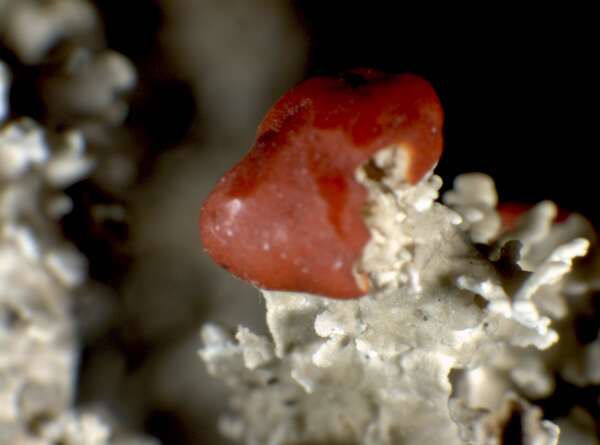

P.L. Nimis; Owner: Department of Life Sciences, University of Trieste
Herbarium: TSB (17069)
2001/12/04
detail of apothecium

Gabriele Gheza - https://lichenidilombardia.home.blog
Italy, Trentino-Alto Adige, Trento, , San Martino di Castrozza, 1650 m
09/2013
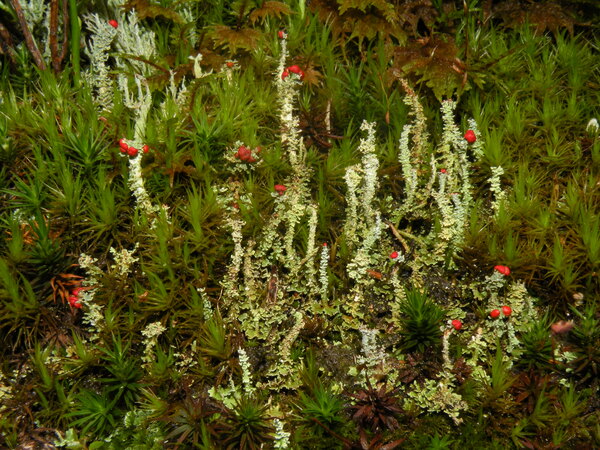
Gabriele Gheza - https://lichenidilombardia.home.blog
Italy, Trentino-Alto Adige, Trento, , San Martino di Castrozza, 1650 m
09/2013
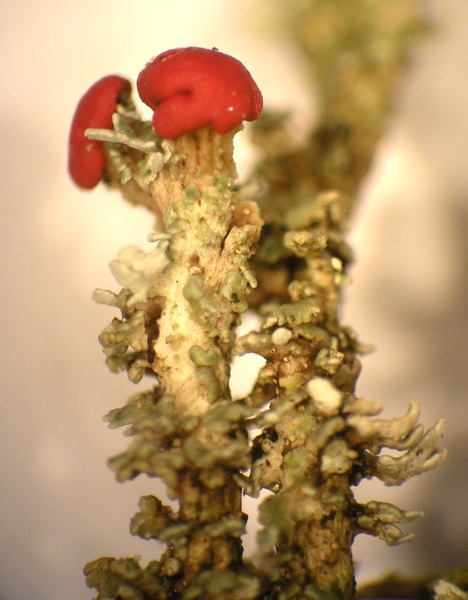
Gabriele Gheza - https://lichenidilombardia.home.blog
Italy, Trentino-Alto Adige, Trento, , San Martino di Castrozza, 1650 m
09/2013
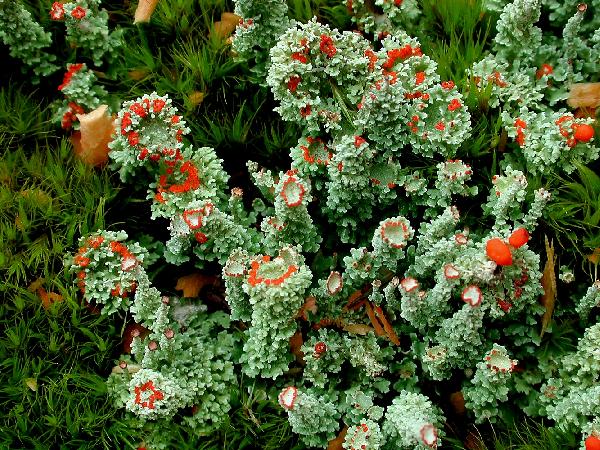
Ulrich Kirschbaum CC BY-SA 4.0 - Source: https://www.thm.de/lse/ulrich-kirschbaum/flechtenbilder
Sweden: Dalarna.
Growth form: Fruticose
Substrata: soil, terricolous mosses, and plant debris
Photobiont: green algae other than Trentepohlia
Reproductive strategy: mainly sexual
Commonnes-rarity: (info)
Alpine belt: very rare
Subalpine belt: rather rare
Oromediterranean belt: absent
Montane belt: rare
Submediterranean belt: absent
Padanian area: absent
Humid submediterranean belt: absent
Humid mediterranean belt: absent
Dry mediterranean belt: absent

Predictive model
| Herbarium samples |


P.L. Nimis; Owner: Department of Life Sciences, University of Trieste
Herbarium: TSB (17069)
2001/12/04


P.L. Nimis; Owner: Department of Life Sciences, University of Trieste
Herbarium: TSB (17069)
2001/12/04
detail of apothecium

Gabriele Gheza - https://lichenidilombardia.home.blog
Italy, Trentino-Alto Adige, Trento, , San Martino di Castrozza, 1650 m
09/2013

Gabriele Gheza - https://lichenidilombardia.home.blog
Italy, Trentino-Alto Adige, Trento, , San Martino di Castrozza, 1650 m
09/2013

Gabriele Gheza - https://lichenidilombardia.home.blog
Italy, Trentino-Alto Adige, Trento, , San Martino di Castrozza, 1650 m
09/2013

 INDEX FUNGORUM
INDEX FUNGORUM
 GBIF
GBIF
 DOLICHENS
DOLICHENS

